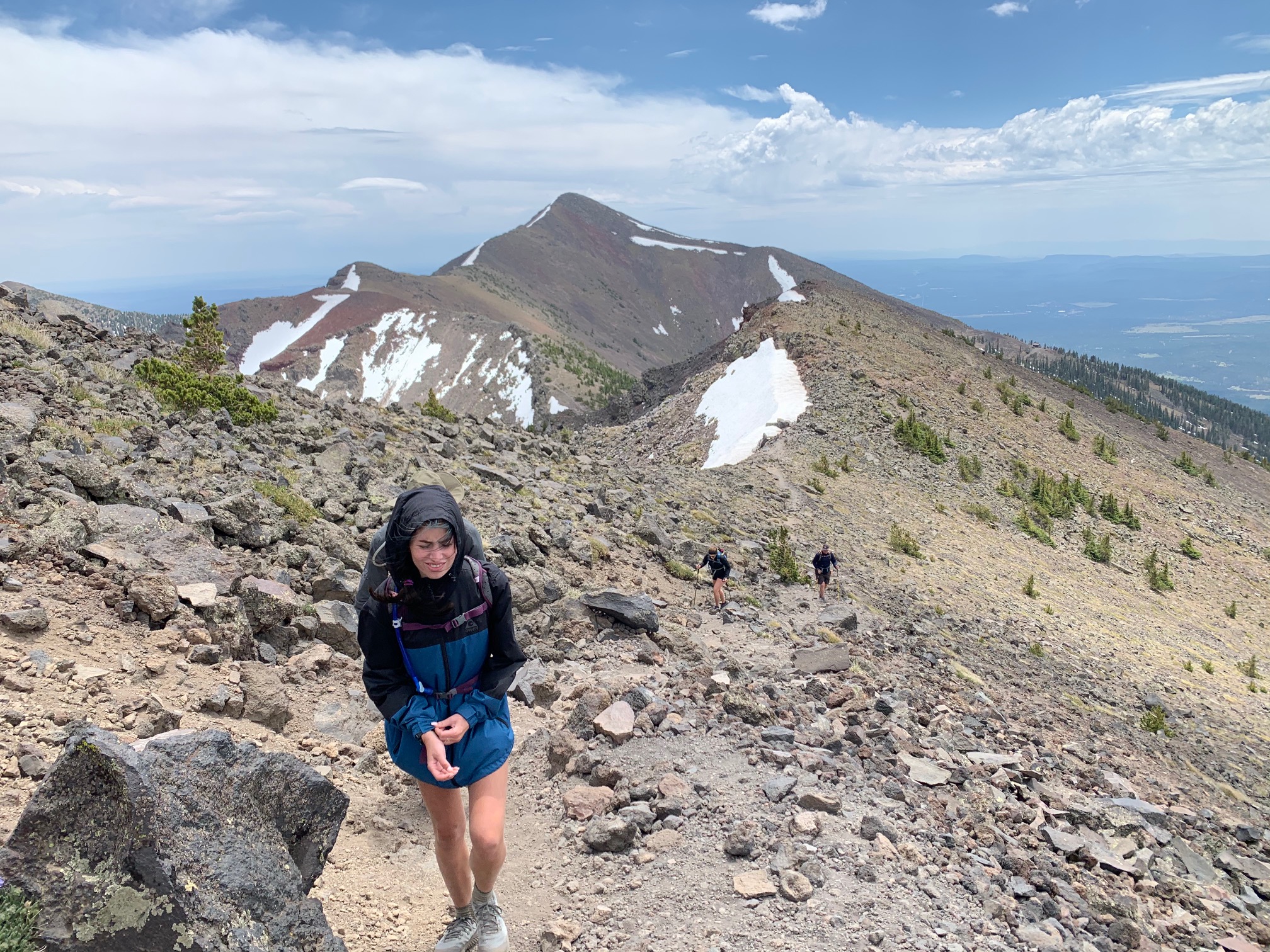Building strength to hike or backpack requires more than just building cardio, we also have to accustom our bodies to the new locations. As you can tell from this picture, I was struggling to maintain my pace because of the exterior forces working against me. I would say I have a very sensitive body that is easily jerked by the climate and terrain of the hike I am working with. Here are some things that helped prepare me for some of the hiking trips I have taken.
1. Building Muscle
When going to the gym, we want to be proactive in the muscle groups we train for backpacking. Most people would assume we will be focusing on our legs and glutes since they will be carrying us through out journey, but what I will be focusing on is my upper body. When carrying a load during a hike, even if it is only a ten pound Camelback, after around 9-10 miles I notice discomfort in my lower back and shoulder blades. After consistently carrying a load for multiple days, the pressure on your shoulder will only increase. My goal is to prepare you to carry 20 percent of your body weight in a bag without discomfort. To start off we need to focus on strengthening our core, chest, and back. This is my personal routine that I will slowly intensify.
- Core: Side Planks 3x, Center Plank 3x, Russian Twist 2x, and Butterfly Sit ups.
- Chest: Bench Press 3x, Cable Crossover 3x, and Incline Dumbbell Flye 3x.
- Back: Pull up 3x, Renegade Row 2x.
2. Maintaining Cardio
Running has been the only consistent exercise I genuinely enjoy doing in my life, now from popular belief, this is not shared. When building your cardio, you need to start small and consistent. You do not need to be able to run 10 miles to hike 10 miles, but you do need to put it in your everyday routine. Start with one mile and take it one half mile up every week. When I have reached the point of running around 4 miles comfortable, I can safely say I can hike 15 miles comfortably. While running is the most efficient way to build hiking cardio, repeating a short hike at a jog can work too. There was a 4 mile, 1,500 ft elevation gain hike I fell in love with next to my house that I followed everyday religiously. After a few months, I was able to jog it. If you want to combine both cardio and muscle gain, you can begin to hike/jog with a low amount of weight on your back. Now it is not always fun to hike with rocks in your backpack, so investing in a class such as Pilates is a great way to increase strength and cardio in a more enjoyable way.
3. Getting Accustomed to Altitudes and temperatures
This was one skill I didn’t even consider when training for hikes. It took a 10,000 elevation gain in one day and some bad altitude sickness to learn this. Make sure you are practicing hiking at a similar height to one you may encounter on a trip. This will not only prevent altitude sickness, but will further train your lungs. Same goes with temperatures. Camp overnight at a similar temperature to one you will experience on the trail and experiment with layers to see what works best for you. This past winter me and my c0-hiker purposefully hiked out in the snow to see what our feet could handle. For this upcoming winter I will try different methods for providing warmth and will report back what was most successful.
4. Preventing injury
I tend to injury easily when trying something new. While we cannot completely avoid injury, we can practice some things to prevent it. Stretch as often as possible, even before your short hike. Wear protective gear (even if you feel silly). Almost every injury I have had while doing an outdoor sport was from not wearing thick socks, protective shoes, and full sun coverage. If you are injured, be kind and patient with yourself and allow your body to fully heal before preceding forward.
With love, Miss Rachel
